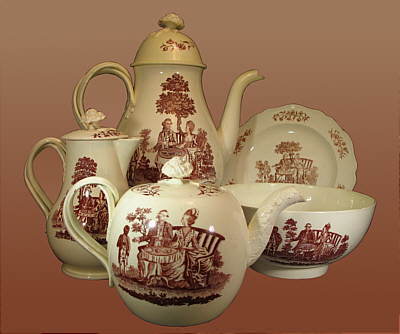David Clayton's Blog, page 23
March 20, 2015
Commentary on Hieronymous Bosch’s Christ Carrying the Cross by Dr Caroline Farey of the School of the Annunciation
Here is an audio commentary on this beautiful painting by Dr Caroline Farey of the School of the Annunciation in Devon in England. It is on the newly posted Sacred Art Resources page of their website and was recorded to introduce Module 4 of their Diploma in the New Evangelization, which is one of their newly launched online/distance learning courses.
You can watch the video by going to the Sacred Art Resources page, here
Dr Farey is one of the best that I know of those who consider the symbolism of the of content of paintings. She explains the significance of each figure in the painting one by one. As well as the placement of the city and the trees in the background.
For example she tells us how just one figure in the crowd, in the red pointed hat, looks beyond to the two small figures in the background, who are St John and Our Lady, taking the narrow road to the New Jerusalem in the distance.All the others are participating in the leading of Christ to his death. This was painted at time when the Church was not at its purest (at the end of the 15th century prior to the Reformation). The figures on the left, characterize the flaws in humanity and in the institutional Church. The figure on the right of the cross, a soldier, has a crescent moon on his shoulder and represents Islam. So the greatest threats to the Faith at this time were Islam outside Christendom and the waywardness of the Church within it…plus ca change.
Don’t forget the Way of Beauty online courses
3 College-level transferable credits, $900.
Audit the college-level course, $299
Take a reduced version for 25 hours continuing education units (fewer video classes, less material, less interactive teaching) $99
Accredited by Thomas More College of Liberal Arts, available through www.Pontifex.University. To sign up go to the www.Pontifex.University Catalog here.
For artists, for architects, for priests and seminarians, for educators, for all undergraduates! And for everyone who seeks what every Catholic education should offer – a formation in beauty through a living encounter with a cultural inheritance.
March 17, 2015
Talk tomorrow on the Iconography of St Thomas Aquinas in Berkeley, CA – watch live streaming on the internet
The subject of the annual Aquinas Lecture of the Dominican School of Philosophy and Theology, Berkeley, CA will be the Iconography of St Thomas Aquinas. It takes place at the school campus in 2301 Vine Street, Berkeley at 7.30pm, tomorrow, on Wednesday, March 18th.
It will be given by Fr Michael Morris who is on the faculty at the DSPT and Professor of Religion and the Arts. Fr Morris will be better known by many as the writer of the sacred art commentaries for Magnificat magazine.
In what promises to be a fascinating talk, Fr Morris will describe pictoral representations of the saint and explain why he is portrayed as he is, connecting the iconography of the saint to the ‘fables and the facts’ of his life.
It is free to attend but if you wish to go you must register in advance, see here, At the time of writing there are still a few places left. If you are not within striking distance of the campus and can’t get there then it will be streamed live. Go here for more information.
Don’t forget the Way of Beauty online courses
3 College-level transferable credits, $900.
Audit the college-level course, $299
Take a reduced version for 25 hours continuing education units (fewer video classes, less material, less interactive teaching) $99
Accredited by Thomas More College of Liberal Arts, available through www.Pontifex.University. To sign up go to the www.Pontifex.University Catalog here.
For artists, for architects, for priests and seminarians, for educators, for all undergraduates! And for everyone who seeks what every Catholic education should offer – a formation in beauty through a living encounter with a cultural inheritance.
March 12, 2015
Venezuelan Cardinal Speaks Out About the Violence
 Pray for us, Our Lady of Coromoto
Pray for us, Our Lady of Coromoto
I noticed this little news piece on Catholic World News recently. The Archbishop of Caracas was addressing the violence in the country following the shooting of a 14-year-old boy. In a couple of paragraphs he sums up the problem and the answer in Venezuela, as highlighted in my earlier articles, here: How a Loss of Faith Can Lead to the Decline of a Culture and an Economy and Lead to Political Violence, and here: Faith is the Only Hope for a Country in Disarray.
The cause is a lack of faith and the answer lies in upholding Catholic social teaching. Notice that while he directs the condemnation of the violence to the agents of the government, his appeal for a transformation in faith goes beyond the government and is extended to the society as a whole. This I believe is what is necessary. Anyway here is the CWN piece:
The prelate called upon the government of President Nicolás Maduro to ”stop murderous violence” and t o “prohibit the use of lethal force to control demonstrations,” according to a Fides report.
“We must overcome attitudes such as the desire of easy wealth and corruption, political pride, arrogance and lust of power, selfishness, laziness, hatred, and violence,” Cardinal Uroso added. “And we have to save the principles of legality, legitimacy, and morality that support the fabric of social life.”
Don’t forget the Way of Beauty online courses
3 College-level transferable credits, $900.
Audit the college-level course, $299
Take a reduced version for 25 hours continuing education units (fewer video classes, less material, less interactive teaching) $99
Accredited by Thomas More College of Liberal Arts, available through www.Pontifex.University. To sign up go to the www.Pontifex.University Catalog here.
For artists, for architects, for priests and seminarians, for educators, for all undergraduates! And for everyone who seeks what every Catholic education should offer – a formation in beauty through a living encounter with a cultural inheritance.
March 10, 2015
What’s Going to Happen to the Children When There Aren’t Any More Grown Ups?
 This the title of a satirical song written by Noel Coward, the English. Like all that he does, one wonders at his sharp wit and brilliant use of language. In describing the self-indulgent behaviour of a small number of very rich in the 1920s, he seems to predict whole course of the 20th century and now the 21st in three verses and a chorus with an accuracy that makes one shudder.
This the title of a satirical song written by Noel Coward, the English. Like all that he does, one wonders at his sharp wit and brilliant use of language. In describing the self-indulgent behaviour of a small number of very rich in the 1920s, he seems to predict whole course of the 20th century and now the 21st in three verses and a chorus with an accuracy that makes one shudder.
When writing an article about new numbers of Brits going walking in Spain, I quoted the title of another of his songs, Mad Dogs and Englishmen Go Out in the Midday Sun. As I was trawling around for the link, YouTube offered a series of other Noel Coward performances and curiosity took my cursor to this one.
In this song, Coward is brilliantly making fun of the hedonism of the upper classes in 1927 (although some of the references make me wonder if has updated the lyrics for this recording in the 1950s). In his characteristically English and erudite way, he describes how the adults behave like children right through middle age and and on to old age.
The pleasures that once were heaven, look silly at sixty-seven,
Does it amuse the tiny mites, to see their parents high as kites?
One day you’ll clench your tiny fists, and murder your psychiatrists’
He describes excessive drinking, drug taking (he lists the drugs), plastic surgery, undignified drunken ‘jiving’ by the elderly trying to stay young, people seeking distraction through radio and television in order to avoid the responsibilities of life and then trying to assuage their consciences by running to the psychiatrist’s chair. My guess is that this song was popular at the time because those to whom he refers would take a perverse pride in being wealthy enough not to have to behave like responsible adults; and then many of the rest of the population would genuinely like the idea of poking fun at wealthy for their childishness.
It would not have been known at the time just how truly destructive this behaviour is to the person and society and so this is one reason perhaps why he could get away with references to such things at the time. I imagine also the brilliance of the way he has crafted the song and his wit would mean that he was probably given more slack than his contempories.
Listening to it today we know the degree to which the lives he describes are worse than superficial, they are irresponsible and destructive. This bitter truth contrasted with the whimsical manner in which he delivers it, it gives the experience a macabre edge. Another surprise is when it was written, in the late 1920s. It is so accurately prophetic that it sounds like a jab at the hedonism of the sixties, not the twenties. What was true for a small part of the upper classes then, steadily became the standard for behaviour for a large minority perhaps even a majority in society later.
There is an element of self-parody in this song, for Coward was firmly part of the world that he is revealing to others. To hear him articulate so well all the consequences of such behaviour it sounds as though he knew full well where it was leading him. One wonders how troubled he was personally? If that were me, I couldn’t live with myself.
This article was first published in 2012. I was reminded of it by hearing someone talk of importance of the family for nurturing the faith. The hope for the children, one feels, is that they know that there is one who is truly and dependably grown up, Christ. They will learn this through seeing their parents humble themselves before God, kneeling or bowing in prayer. Then though mum and dad are less than perfect occasionally (though one hopes not as bad as those that Coward describes), they will know that there is a greater standard to look to and to rely upon.
Don’t forget the Way of Beauty online courses
3 College-level transferable credits, $900.
Audit the college-level course, $299
Take a reduced version for 25 hours continuing education units (fewer video classes, less material, less interactive teaching) $99
Accredited by Thomas More College of Liberal Arts, available through www.Pontifex.University. To sign up go to the www.Pontifex.University Catalog here.
For artists, for architects, for priests and seminarians, for educators, for all undergraduates! And for everyone who seeks what every Catholic education should offer – a formation in beauty through a living encounter with a cultural inheritance.
March 6, 2015
Start your own Alpha and Omega Group!
Meet for Vespers and Compline; plus a meal and conversation…and if you have a Dominican from the Western Province to hand all the better!
I remember that the Anglican Church in England designated the 1990s as the ‘decade of Evangelism’ with the goal of evangelizing the whole of the nation prior to the millennium. This seemed an absurdly optimistic goal to me, but I suppose if we remember that strictly to evangelize means ‘to show’ people Christ rather than to convert them then they might have come close, depending on what you consider showing people Christ means.
One thing that did come out of this energetic push to carry the gospel was the proliferation of ‘alpha groups’. This was based upon a series of recorded talks about Christianity. Parishes set up groups in which people brought along food for a potluck meal, they watched the video and then had a discussion based upon it, perhaps guided by a series of questions that came with the video. I don’t know how successful it was in converting people, but it was certainly successful at reinforcing the faith of existing Christians, which is a very good thing too. It was good enough for many other churches including the Catholic Church to follow the format and add additional videos that filled the gaps in the presentation of Christianity of the protestant Evangelicals.
My father ran one at his local Methodist church and I attended one the evenings he lead. It was popular enough that they repeated for several years and what was interesting was that quite a number of people came to the alpha groups each year that it took place, even though the materials were repeated. What they enjoyed I think went far beyond what they were learning intellectually, it was the fellowship with like minded people.
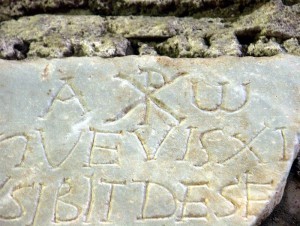 As far as I recollect, the hub of this evangelical (and Evangelical) push was Holy Trinity church in Brompton (‘HTB’). This is the epicenter of guitar-strumming Evangelical Christianity in the UK. Readers in London will be aware that ironically it is is situated immediately adjacent to a church which is at the other end of the spectrum, the traditional Catholic and very liturgically minded Brompton Oratory. In fact, when I was living in London and attended the Oratory regularly, a group of us used to go and sit in the grounds of HTB on pleasant summer afternoons and have a picnic after attending Solemn Mass at HMO (Holy Mother Oratory).
As far as I recollect, the hub of this evangelical (and Evangelical) push was Holy Trinity church in Brompton (‘HTB’). This is the epicenter of guitar-strumming Evangelical Christianity in the UK. Readers in London will be aware that ironically it is is situated immediately adjacent to a church which is at the other end of the spectrum, the traditional Catholic and very liturgically minded Brompton Oratory. In fact, when I was living in London and attended the Oratory regularly, a group of us used to go and sit in the grounds of HTB on pleasant summer afternoons and have a picnic after attending Solemn Mass at HMO (Holy Mother Oratory).
I do remember one of the Fathers at the Oratory joking that the name of the group – alpha – indicated that they had made a start but it was incomplete; he was referring to quotation in the Book of Revelation: ‘I am the alpha and the omega, the first and the last, the beginning and the end.’ The Oratory even started a series of talks of their own and they called it the ‘Alpha and Omega Group’. If there is one church in England that understands evangelization it is the Brompton Oratory and they do not need to do it via organized talks or alpha-type sessions. Many, many converts have come to the Faith as a result of its mission of beautiful liturgy and spiritual direction from the Fathers. I am one of them.
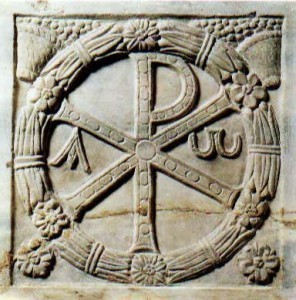 I wanted to play my part in the evangelization of the Faith and so all I had to do was invite them to attend Mass their with me – perhaps with the promise of beautifully sung polyphony even if they didn’t like the rest of it. A number of those converted including one his death bed a few months later (at the age of 40, when dying of cancer, may he rest in peace). All I had to do, I reckoned, was get them in there and the Fathers of the Oratory and the Holy Spirit would do the rest.
I wanted to play my part in the evangelization of the Faith and so all I had to do was invite them to attend Mass their with me – perhaps with the promise of beautifully sung polyphony even if they didn’t like the rest of it. A number of those converted including one his death bed a few months later (at the age of 40, when dying of cancer, may he rest in peace). All I had to do, I reckoned, was get them in there and the Fathers of the Oratory and the Holy Spirit would do the rest.
A beautiful Mass is always going to be what draws most powerfully to the Faith, but I think that there are things on the line of the alpha group that we could do to support that. My brother and his wife have just started a regular group in Berkeley, California that meets for Vespers, a potluck meal and then Compline. It involves minimal organization and runs at a relaxed pace from about 6.30pm to 9pm. They just invite friends and because they and they are lucky enough to have a large enough room in their home to accommodate perhaps 20 people, they encourage friends to bring others along. This is not an official parish event, it’s all done through their own networks. There is no need to have a priest involved or use church space if they are not available.
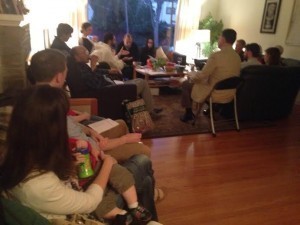 When Rob and Anna described it to me he said it was a great success. The great thing is that the liturgy gives the evening a purpose, inspires conversation if they need it and engenders deep fellowship through the Holy Spirit. Also there is enough repetition so that people who are totally unused to what is going on will pick it up over the course of each evening and subsequent evenings (they meet fornightly); and enough variation so that it distinguishes one evening from another and maintains interest. We have been encouraged in recent times by the popes since Pius XII (to my knowledge) to sing the Office in the domestic church and here is a simple way that it is being done.
When Rob and Anna described it to me he said it was a great success. The great thing is that the liturgy gives the evening a purpose, inspires conversation if they need it and engenders deep fellowship through the Holy Spirit. Also there is enough repetition so that people who are totally unused to what is going on will pick it up over the course of each evening and subsequent evenings (they meet fornightly); and enough variation so that it distinguishes one evening from another and maintains interest. We have been encouraged in recent times by the popes since Pius XII (to my knowledge) to sing the Office in the domestic church and here is a simple way that it is being done.
They sang in the vernacular and were lucky enough on the first couple of occasions to have a local Dominican priest come along. The Western province of the Dominicans in the US has done a lot of good work in working out good and singable chant for the English language (apologies to other Provinces if I’m being unfair and you have contributed too!). Before he moved to where he is now, Rob used to live walking distance from St Albert’s Priory in nearby Oakland and whenever I stayed with him we used to go down and pray with them. I made use of much of what I heard either directly or indirectly in the singing of the Office at Thomas More College of Liberal Arts.
 It was one of the recently ordained priests, Fr Dominic David, whom we used to see there when he was a student who came to these first evenings. He helped people by explaining what the Liturgy of the Hours is and taught people the tones. Some had never done anything like this before in their lives, but they happily joined in once things got going. They have some simple Anglican style, four-part harmonies and there were one or two others present who were experienced choristers who could easily pick up the simple harmonies. Rob told me that it was a wonderful thing to be part of this especially all those praying were chanting.
It was one of the recently ordained priests, Fr Dominic David, whom we used to see there when he was a student who came to these first evenings. He helped people by explaining what the Liturgy of the Hours is and taught people the tones. Some had never done anything like this before in their lives, but they happily joined in once things got going. They have some simple Anglican style, four-part harmonies and there were one or two others present who were experienced choristers who could easily pick up the simple harmonies. Rob told me that it was a wonderful thing to be part of this especially all those praying were chanting.
Benedict XVI told us that the domestic church ie prayer in the home centered on families is crucial to the new evangelization because of the effect that it has on those who pray and their participation in families and in society in general so establishing a ‘culture of love’ (cf Address to Plenary Assembly of the Pontifical Council for the Family, Thursday, 1 December 2011).
Provided that the ultimate purpose is the worship of God so that the liturgy isn’t instrumentalized, then fruits will ensue. Then as sacred liturgy it is showing us the alpha and the omega, the first and the last, the beginning and the end and, to quote Sacrosanctum Consilium, the source and the summit of all.
So perhaps think about this at home…start your own alpha and omega group.
Don’t forget the Way of Beauty online courses
3 College-level transferable credits, $900.
Audit the college-level course, $299
Take a reduced version for 25 hours continuing education units (fewer video classes, less material, less interactive teaching) $99
Accredited by Thomas More College of Liberal Arts, available through www.Pontifex.University. To sign up go to the www.Pontifex.University Catalog here.
For artists, for architects, for priests and seminarians, for educators, for all undergraduates! And for everyone who seeks what every Catholic education should offer – a formation in beauty through a living encounter with a cultural inheritance.
March 3, 2015
Do the expanded, college-level Way of Beauty online course for a third of the price
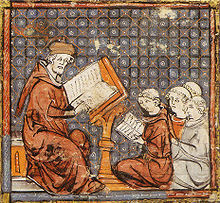 You can audit the college level course for just $299 (full price for credit is $900); and if you have done the cont. ed course already, then we will deduct what you have paid already and you can take that next step up for just $200
You can audit the college level course for just $299 (full price for credit is $900); and if you have done the cont. ed course already, then we will deduct what you have paid already and you can take that next step up for just $200
A number of people have been asking me about the difference between the differences in the content of the college level course and the one for continuing education. The answer is quite a lot! There are 21 more videos to watch, including a whole history of Western art from the Greeks to the present day, so you can put all the theory presented into context much easier. There are also videos showing how modern astrophysics is compatible with ancient cosmology; how both are in harmony with the cosmic symbolism of the liturgy by taking you through the day of worship at a traditional Benedictine monastery; and giving greater detail on the nature of beauty itself. Furthermore there are opportunities to take part in interactive seminars after each new video which guide you to greater understanding of the information you are receiving.
For more information go to the Online Course page on this blog, or direct the Catalog at www.Pontifex.University
February 27, 2015
Furniture design in harmony with the cosmos
Here is a video demonstrating how furniture makers used to incorporate the musical harmony into furniture design. Some might remember that I featured the book that this promotes, By Hand and Eye on this site some time ago.
Don’t forget the Way of Beauty online courses www.Pontifex.University (go to the Catalog) for college credit, for continuing ed. units, or for audit. A formation through an encounter with a cultural heritage – for artists, architects, priests and seminarians, and all interested in contributing to the ‘new epiphany of beauty’.
February 19, 2015
New recording of the Lord’s Prayer by Jernberg with scrolling score for choirs
Paul has just sent this to me. It is the Our Father from his CD so the quality is much higher and also he has loaded it on YouTube so that the score srolls as the choir sings. This means that it will be easy for choirs to learn. Every choir should start with this – it is amazingly easy to sing and as you can hear from the recording sounds great.
Also, in this recording you get a sense of how the whole Mass is sung – the priest is intoning the parts normally spoken. For more information go to pauljernberg.com.
Don’t forget the Way of Beauty online course www.Pontifex.University (go to the Catalog) for college credit, for continuing ed. units, or for audit. A formation through an encounter with a cultural heritage – for artists, architects, priests and seminarians, contributing to the ‘new epiphany of beauty’
February 17, 2015
Why Did They Ever Make This Tea Pot?
You cannot separate true utility and beauty, the two are connected. Some things have both…and some have neither
Anyone from the UK will recognize this 1960s design of teapot. I remember first seeing them as a boy at a rest stop on the M6 motorway which runs from Birmingham to Glasgow through the northwest of England. We were struck by how modern they looked in gleaming stainless steel. Everything in the 1960s looked modern and at the time I thought it was great. As a 7 year old I was enthusiastic about it all, from concrete shopping malls through to 100% nylon shirts that always untucked themselves spontaneously because of the static they generated. We went out and bought one of these new teapots.
 This design is still knocking about. I was reminded of them when I went for a cup of tea in a cafe in England and the milk was served in a jug of this design. The milk jug had exactly the same design flaw as I remember in every teapot like this – it was very difficult to pour without dribbling milk, or tea, onto the table. On this occasion, I spilled milk onto the cafe table (I didn’t cry over it in case you’re wondering, although in my irritation I did mutter a few choice words to myself).
This design is still knocking about. I was reminded of them when I went for a cup of tea in a cafe in England and the milk was served in a jug of this design. The milk jug had exactly the same design flaw as I remember in every teapot like this – it was very difficult to pour without dribbling milk, or tea, onto the table. On this occasion, I spilled milk onto the cafe table (I didn’t cry over it in case you’re wondering, although in my irritation I did mutter a few choice words to myself).
It was just like the pot we had at home all those years ago. There was rarely a clean line of liquid going from minimalistic-lip spout to cup. Usually there was a dribble as well that ran down the front of the pot to the base then and onto the table beneath. It didn’t spill every time. Some could develop the knack of a clean pour. I can remember that some of my family (not me) developed this skill. However whenever I or my mum or one of my brothers poured, onto tablecloth and table it went. This was particularly troublesome in our family home years ago because we had a french polished dining table. This meant that wherever hot tea hit it, there was a clear white stain on the deep chestnut coloured table. French polishing is beautiful when pristine, but it is awkward to repair. So in the end my dad stripped the table and put a layer of more durable polyurethane varnish on it.
 The question that always comes to my mind when I think of these teapots is how did something that is so manifestly unsuited for its purpose, pouring tea, ever get to the stage of being mass produced? Didn’t somebody along the way investigate whether or not it actually works before they put it on the market? Didn’t somebody try to make a cup of tea with it first? There is a string of other artifacts that come into the same category for me. There is the design of cheap travel mug which no matter how hard you screw down the lid, even when brand new, always leaks and drips coffee onto your shirt when you tip it up. Then there is the automatic hand dryer that is set off by light sensor so your hands trip of the light sensor as long as they are in the stream of hot air so you get a swift, continous dry…or that’s the theory; in fact the air jet goes on for a few seconds and then you have to trip the light sensor again to keep it going. The only problem is that your hand doesn’t trip the light sensor while it is in the air jet, so you have to move it away to the right place in order to restart it. The drying process therefore become of annoying process of many five second bursts rather than being continuous and swift. And there is the toilet seat that stays up for precisely 11 seconds, just long enough so that you are confident it will stay up permanently and remove your stabalizing hand, and then when your not expecting it, falls back down again with a clatter (men will understand the annoyance of this one).
The question that always comes to my mind when I think of these teapots is how did something that is so manifestly unsuited for its purpose, pouring tea, ever get to the stage of being mass produced? Didn’t somebody along the way investigate whether or not it actually works before they put it on the market? Didn’t somebody try to make a cup of tea with it first? There is a string of other artifacts that come into the same category for me. There is the design of cheap travel mug which no matter how hard you screw down the lid, even when brand new, always leaks and drips coffee onto your shirt when you tip it up. Then there is the automatic hand dryer that is set off by light sensor so your hands trip of the light sensor as long as they are in the stream of hot air so you get a swift, continous dry…or that’s the theory; in fact the air jet goes on for a few seconds and then you have to trip the light sensor again to keep it going. The only problem is that your hand doesn’t trip the light sensor while it is in the air jet, so you have to move it away to the right place in order to restart it. The drying process therefore become of annoying process of many five second bursts rather than being continuous and swift. And there is the toilet seat that stays up for precisely 11 seconds, just long enough so that you are confident it will stay up permanently and remove your stabalizing hand, and then when your not expecting it, falls back down again with a clatter (men will understand the annoyance of this one).
Going back to making to making tea in England, we used the the more traditional silver teapot that was supposed to be just for guests, because it poured perfecty. It had the traditional spout as we see in the following teapots, which are based on the 18th century English design.
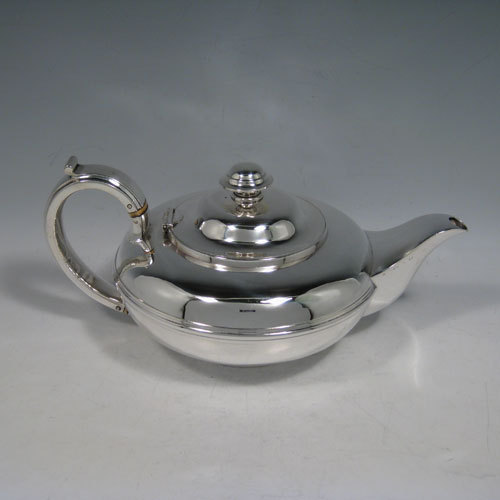
Here we have utility and beauty. In the past it was assumed that you could not have one without the other. First of all, beauty was itself a utility in the sense that anything that participates in the divine beauty – and yes even a teapot can do that – raises the soul to God, which should always be consideration regardless of the primary use of what we design. Second, it was assumed that the most efficient design in terms of use was also the most beautiful. Gothic masons created beautiful cathedrals because this was an indication of the most structurally sound form (other things being equal – its not the only indication).
Well, that’s my rant about teapots…I’m off for a cup of tea and a biscuit out on the patio, with elegant teapot. Next week I will discuss the aesthetics of biscuits…
In the mean time here’s some elegant china:
Don’t forget the Way of Beauty online course www.Pontifex.University (go to the Catalog) for college credit, for continuing ed. units, or for audit. A formation through an encounter with a cultural heritage – for artists, architects, priests and seminarians, contributing to the ‘new epiphany of beauty’
February 13, 2015
A Mass in an Ancient Church in Wales with Restored Gothic Wall Paintings
 Here are some photos, courtesy of David Woolf of a Votive Mass of St Teilo that was celebrated on February 7th in the Extraordinary Form in the Church of St Teilo, at St Fagan’s National History Museum, Cardiff, Wales, UK.
Here are some photos, courtesy of David Woolf of a Votive Mass of St Teilo that was celebrated on February 7th in the Extraordinary Form in the Church of St Teilo, at St Fagan’s National History Museum, Cardiff, Wales, UK.
David told me: ‘The Mass was hosted by the students of the Cardiff University Catholic Chaplaincy and was celebrated by their Chaplain, Fr Gareth Jones.
‘The Church of St Teilo is of particular historical interest. Having become redundant in 1970, it was moved, brick by brick, from its 12th century site at Llandeilo Taly-Bont, near Pontarddulais, and reconstructed at the St Fagan’s Museum. Prior to its removal wall paintings, dating from the 15th century, were uncovered beneath the wall plaster. These were removed and preserved in the National Museum of Wales. When St Teilo’s Church was reconstructed it was decorated as it would have appeared in the 1530s.’
St Teilo’s feast day was two days later on February 9th. St Teilo is is a 6th century British saint, who studied under St Paulinus at Llanddeusant, in the Brecon Beacons and, as a monk, with St David at Mynyw in west Wales. He founded his own monastery at Llandeilo Fawr, again in the Brecon Beacons, where is probably died. A later tradition has St Teilo accompanied by St David and St Padarn make a pilgrimage to Jerusalem. He spent some years in Brittany. At Llandaff he is venerated as the founder of the see (which contains the capital of Wales, Cardiff).
I don’t know what readers thing about the paintings? When I look at them, it tells me that we should not always be so starry-eyed about paintings from the period before the Englightenment. It is of great historical interest to see the church as it was in the 1530s so I am very glad that this was done. The images look to my inexpert eye as though they are older than that, probably gothic. What I would say is that the artist was no Matthew Parris or Fra Angelico. In the medieval period many small churches would have been painted by the parishioners or local artists and they took pride in matching or surpassing the local village churches. It would not have occurred to them to have bare walls.
Information on St Teilo from www.universalis.com
Photos: Dr David A Woolf
Don’t forget the Way of Beauty online course www.Pontifex.University (go to the Catalog) for college credit, for continuing ed. units, or for audit. A formation through an encounter with a cultural heritage – for artists, architects, priests and seminarians, contributing to the ‘new epiphany of beauty’
David Clayton's Blog
- David Clayton's profile
- 4 followers













